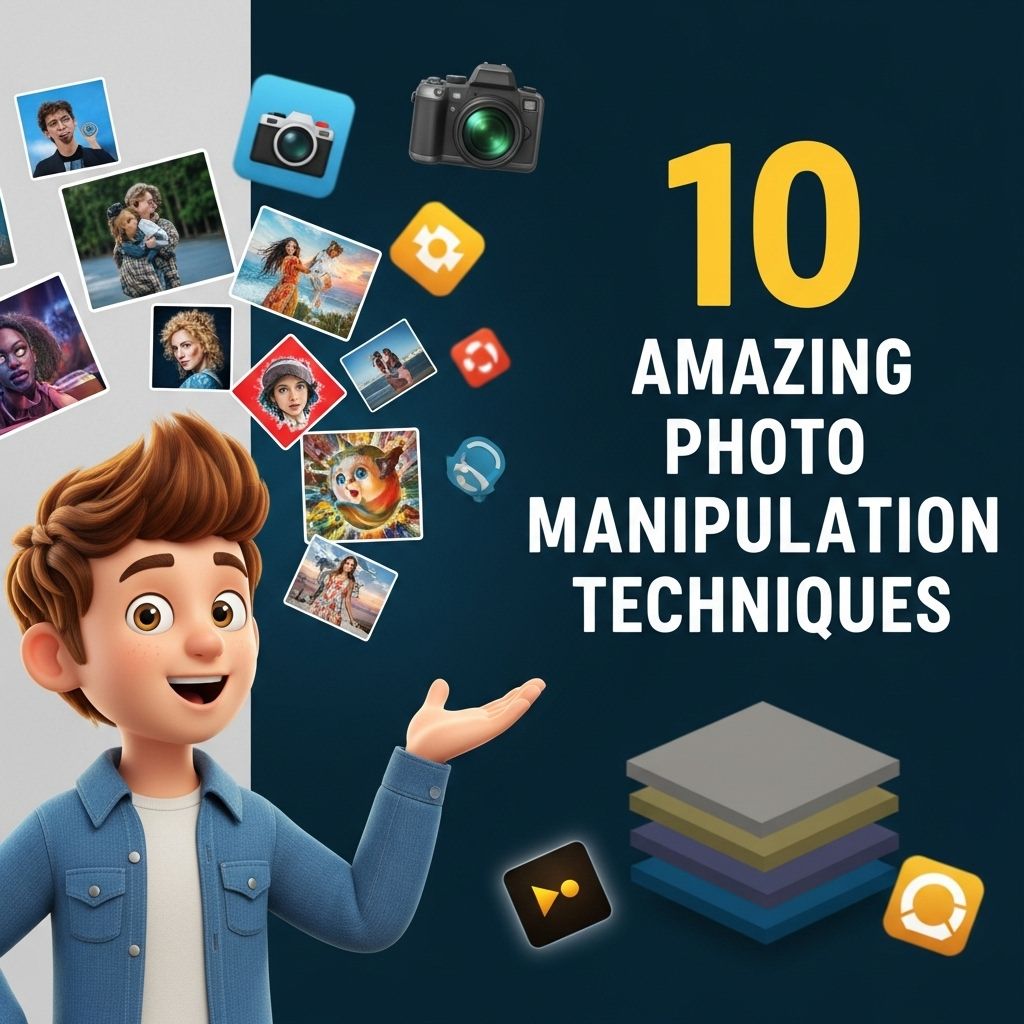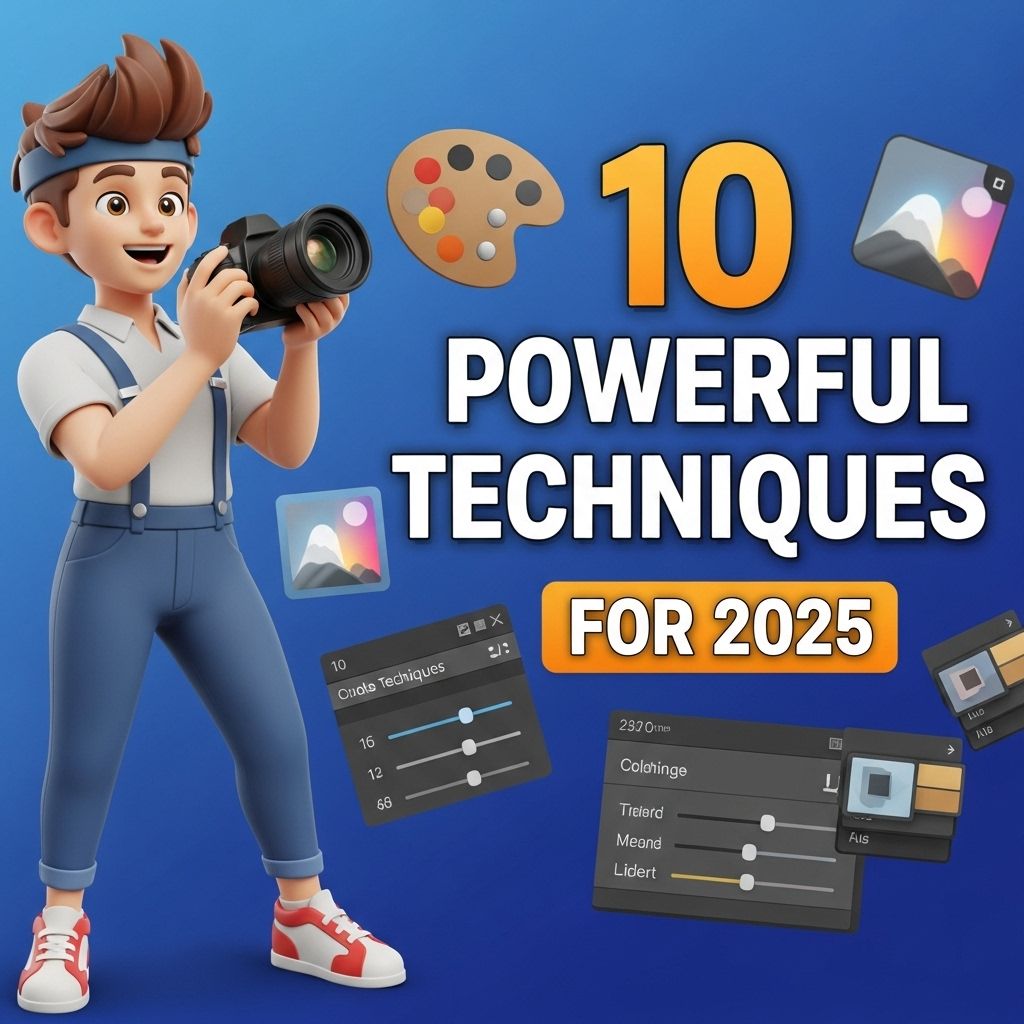In the digital age, photo manipulation has become an art form that allows photographers and graphic designers to transform ordinary images into extraordinary visual experiences. The ability to edit and enhance images has never been easier, thanks to advanced software and tools. Whether you are a professional designer or an enthusiastic hobbyist, understanding the various techniques of photo manipulation can elevate your work and unleash your creativity. In this article, we will explore ten amazing photo manipulation techniques that can enhance your images and impress your audience.
1. Layering Techniques
Layering is the foundational technique in photo manipulation that allows designers to work non-destructively. By separating different elements of an image into layers, you can edit each element individually without affecting the others. Here’s how to master layering:
- Open your image in software like Adobe Photoshop.
- Create multiple layers for different components (background, subject, effects).
- Use blending modes to control how layers interact with each other.
- Utilize opacity adjustments to create realistic composite images.
2. Color Grading
Color grading is essential for establishing mood and atmosphere in your images. This technique involves adjusting colors to enhance visual appeal and convey a specific feeling. Steps for effective color grading include:
- Adjusting brightness and contrast to improve clarity.
- Using color balance to modify the intensity of colors.
- Employing selective color adjustment for targeted enhancements.
- Applying gradient maps for sophisticated color schemes.
Tools for Color Grading
Some popular tools for color grading include:
| Tool | Features |
|---|---|
| Adobe Photoshop | Comprehensive color adjustment options, including Curves and Levels. |
| Adobe Lightroom | Powerful tools for batch editing and applying presets. |
| Capture One | Advanced color grading tools tailored for professional photographers. |
3. Perspective Manipulation
Changing the perspective of an image can create a striking effect, making it appear more dynamic and engaging. Techniques for perspective manipulation include:
- Using the Transform tool to skew or rotate images.
- Applying the Warp tool to adjust specific areas of an image.
- Creating forced perspective by combining different focal lengths.
4. Surreal Compositions
Surrealism in photo manipulation challenges the viewer’s perception of reality. To create surreal compositions:
- Combine disparate elements that do not typically belong together.
- Use dreamlike color schemes and lighting.
- Create visual juxtapositions that provoke thought and emotion.
Examples of Surreal Compositions
Some famous surreal compositions include:
- Salvador Dalí’s melting clocks.
- Rene Magritte’s floating objects.
- Contemporary photographers like Erik Almas who merge fantasy and reality.
5. Textures and Overlays
Adding textures and overlays can enrich your images, adding depth and interest. Here’s how to effectively incorporate textures:
- Select a texture that complements your image (grunge, fabric, natural).
- Overlay the texture on a new layer.
- Adjust the blending mode and opacity for a natural integration.
Popular Textures
Common textures used in photo manipulation:
- Paper textures for a vintage look.
- Watercolor textures for artistic effects.
- Grunge textures for an edgy feel.
6. Retouching Techniques
Retouching is crucial for cleaning up images and enhancing subjects. Techniques for effective retouching include:
- Using the Healing Brush and Clone Stamp tools to remove blemishes.
- Enhancing facial features with skin smoothing techniques.
- Adjusting lighting and shadows for a more polished look.
7. Creating Depth of Field
Depth of field (DoF) refers to the amount of your image that is in focus. Manipulating DoF can guide the viewer’s attention to specific areas. Techniques include:
- Using Gaussian Blur to soften background elements.
- Applying a Lens Blur filter for realistic depth effects.
- Creating a vignette effect to draw focus inward.
8. Composite Photography
Composite photography involves merging multiple images into one cohesive piece. This technique is popular in advertising and artistic photography. Steps to create a composite include:
- Choosing a primary image and secondary elements to combine.
- Carefully masking out unwanted parts of each image.
- Adjusting lighting and colors to unify the composition.
Best Practices for Composite Photography
To achieve professional results:
- Ensure that lighting and shadows match across all elements.
- Maintain consistent color grading.
- Pay attention to scale and perspective for realism.
9. Digital Painting
Digital painting allows artists to create illustrations directly onto photos, enhancing their uniqueness. Techniques for digital painting include:
- Selecting appropriate brushes to achieve desired textures.
- Using layers to separate painted areas from original images.
- Blending painted elements with existing image tones for cohesion.
10. Motion Effects
Motion effects can add a sense of dynamism and energy to still images. Techniques for creating motion effects include:
- Using the Motion Blur filter to simulate movement.
- Creating radial blurs for action-oriented compositions.
- Incorporating dynamic elements like lines or sweeps to enhance movement.
Conclusion
Mastering photo manipulation techniques can significantly elevate your graphic design and photography skills. By exploring layering, color grading, perspective manipulation, and more, you can create visually stunning images that tell a story and engage your audience. Remember to experiment with different techniques, find your unique style, and enjoy the creative process. The digital canvas is boundless, and the only limit is your imagination.
FAQ
What are the basic photo manipulation techniques?
Basic photo manipulation techniques include cropping, color correction, retouching, layering, and blending images.
How can I create a surreal photo manipulation?
To create a surreal photo manipulation, combine unexpected elements, play with scale and perspective, and use advanced blending techniques.
What software is best for photo manipulation?
Adobe Photoshop is widely regarded as the best software for photo manipulation due to its extensive tools and features.
Are there any free alternatives to Photoshop for photo manipulation?
Yes, free alternatives to Photoshop for photo manipulation include GIMP, Paint.NET, and Photopea.
How can I improve my photo manipulation skills?
Improving photo manipulation skills can be achieved through practice, online tutorials, and experimenting with different techniques and styles.
What are some common mistakes in photo manipulation?
Common mistakes in photo manipulation include over-editing, poor blending, and neglecting to maintain realistic lighting and shadows.




